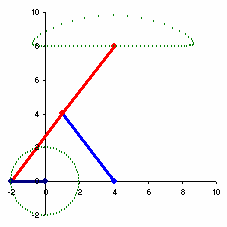Hardness and Hardenability of materials


Oil, salt, and synthetic water-polymer quenchants are also used, but they often require steels of higher alloy content and hardenability. A general rule for the selection of steel and quenchant for a particular part is that the steel should have a hardenability not exceeding that required by the severity of the quenchant selected. The carbon content of the steel should also not exceed that required to meet specified hardness and strength, because quench cracking susceptibility increases with carbon content. The choice of quenching media is important in hardening, but another factor is agitation of the quenching bath. The more rapidly the bath is agitated, the more rapidly heat is removed from the steel and the more effective is the quench.
Hardenability Test Methods: The most commonly used method for determining hardenability is the end-quench test developed by Jominy and Boegehold, and described in detail in both SAE J06 and ASTM A255. In this test a normalized 1-inch-round, approximately 4-inch-long specimen of the steel to be evaluated is heated uniformly to its austenitizing temperature. The specimen is then removed from the furnace, placed in a jig, and immediately end quenched by a jet of room-temperature water. The water is played on the end face of the specimen, without touching the sides, until the entire specimen has cooled. Longitudinal flat surfaces are ground on opposite sides of the piece and Rockwell C scale hardness readings are taken at 1⁄16-inch intervals from the quenched end. The resulting data are plotted on graph paper with the hardness values as ordinates (y-axis) and distances from the quenched end as abscissas (x-axis). Representative data have been accumulated for a variety of standard steel grades and are published by SAE and AISI as “H-bands.” These data show graphically and in tabular form the high and low limits applicable to each grade. The suffix H following the standard AISI/SAE numerical designation indicates that the steel has been produced to specific hardenability limits.
Experiments have confirmed that the cooling rate at a given point along the Jominy bar corresponds closely to the cooling rate at various locations in round bars of various sizes. In general, when end-quench curves for different steels coincide approximately, similar treatments will produce similar properties in sections of the same size. On occasion it is necessary to predict the end-quench hardenability of a steel not available for testing, and reasonably accurate means of calculating hardness for any Jominy location on a section of steel of known analysis and grain size have been developed.
![Heat Treatment of Low-Carbon Steel -- 1942 -- [Edition 1] International Correspondence Schools Home Study](http://ws.amazon.com/widgets/q?MarketPlace=US&ServiceVersion=20070822&ID=AsinImage&WS=1&Format=_SL160_&ASIN=B00161CDES&tag=mechanical-design-handbook-20)
Alloying slows the tempering rate, so that alloy steel requires a higher tempering temperature to obtain a given hardness than carbon steel of the same carbon content. The higher tempering temperature for a given hardness permits a greater relaxation of residual stress and thereby improves the steel’s mechanical properties. Tempering is done in furnaces or in oil or salt baths at temperatures varying from 300 to 1200 degrees F. With most grades of alloy steel, the range between 500 and 700 degrees F is avoided because of a phenomenon known as “blue brittleness,” which reduces impact properties. Tempering the martensitic stainless steels in the range of 800-1100 degrees F is not recommended because of the low and erratic impact properties and reduced corrosion resistance that result. Maximum toughness is achieved at higher temperatures. It is important to temper parts as soon as possible after quenching, because any delay greatly increases the risk of cracking resulting from the high-stress condition in the as-quenched part.
Source: google book




Comments